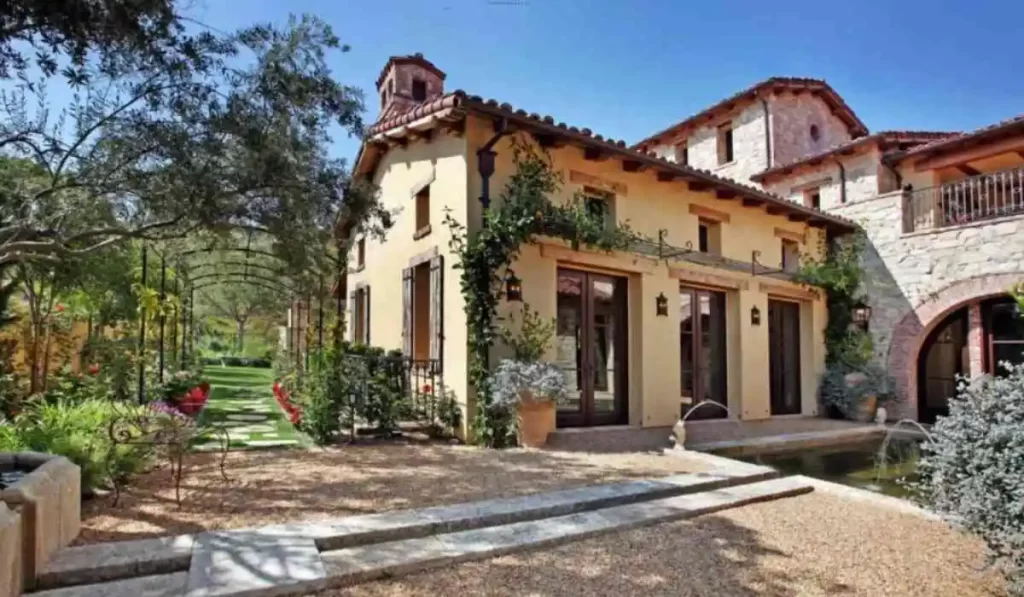Everything to Know About Mediterranean Revival Style Architecture
The 19th century saw the introduction of Mediterranean Revival architecture in the Northern American states. It has multiple features borrowed from Moorish architecture, Venetian Gothic architecture, Beaux-Arts, Italian Renaissance, French Colonial, Spanish Renaissance, and Spanish Colonial architecture. It was the newest fashion in the 1920s and 1930s, being used generously to design palaces, beachside villas, and coastal resorts.
The style is often associated with leading architects of their time such as August Geiger, Addison Mizner, Bertram Goodhue, Sumner Spaulding, and Paul Williams.
Characteristics of Mediterranean Revival Style Architecture
The Mediterranean Revival architecture boasts large, symmetrical façades, often based on a rectangular floor plan. Other characteristics include stucco exteriors, red tiled roofs, circular or arched windows and doorways, one or two stories, balconies made of wood or wrought iron with window grilles, and heavy wooden doors. Oftentimes, you would notice keystones being used. They also have wrought iron and ornamental detailing. Another one of its crucial features is landscaped gardens with Mediterranean plants.

Let’s talk about these characteristics in detail.
1. Stucco Exteriors and Interiors
One of the most recognizable features of Mediterranean Revival style architecture is stucco exteriors and interiors. The smooth, plaster finish is often painted in soft, earthy tones, ranging from warm beige and terracotta to light yellows and off-whites. During the hot days, they retain the interior’s cold, whereas on the cold nights, they keep the room warm.

2. Red Tiled Roofs
Red tiled roofs are a hallmark of Mediterranean Revival architecture, inspired by traditional Spanish and Italian villas. The curved clay tiles, often in shades of red, orange, and terracotta capture cold air in its pocket, lowering the temperature. The tile roof overhangs have a low pitch and a gentle curve. This assists in drainage. The overhangs ensure added protection from the sun and throw the pouring water at a distance, lest they touch the stucco exteriors.
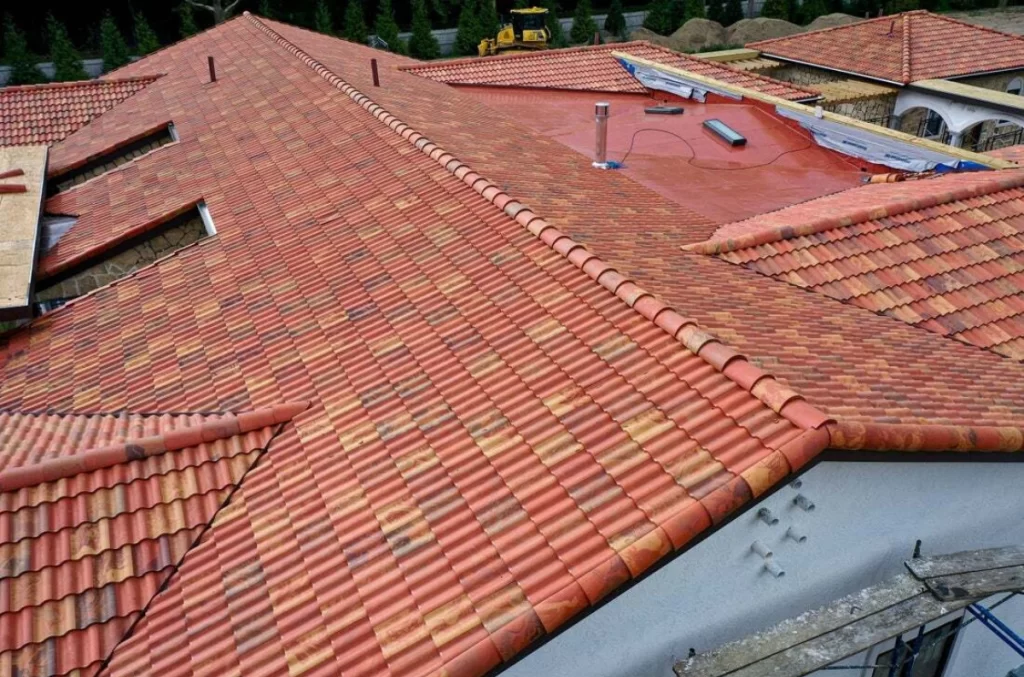
3. Arched Windows and Doorways
The Mediterranean Revival style also features arched windows and doorways. There are an equal number of windows on either side. The doorways are often augmented by the presence of huge columns and arcades which keep the interior open. The arches make for an exciting break from the strict geometry. The presence of arched windows and doorways puts emphasis on natural light and ventilation. The arches are often made from stone or stucco.
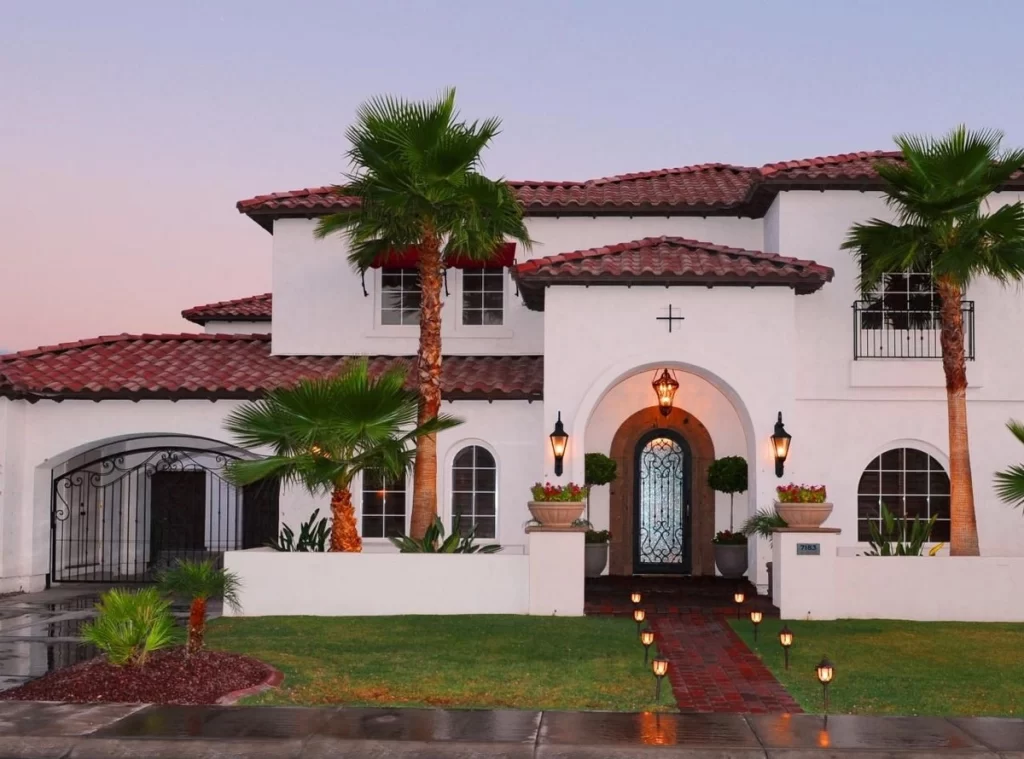
4. Open Spaces – Courtyards and Patios; Terraces and Balconies
Courtyards and patios provide outdoor living spaces that seamlessly connect with the interior. Due to the use of arched windows and doorways and the accompanying columns and arcades, the patio seems to be bigger. They also have enclosed courtyards that feature beautiful landscaping, fountains, or outdoor kitchens. Other open spaces include terraces and balconies, often accessed through large French doors. Balconies are typically adorned with wrought iron railings and shaded by pergolas or tile roof overhangs.
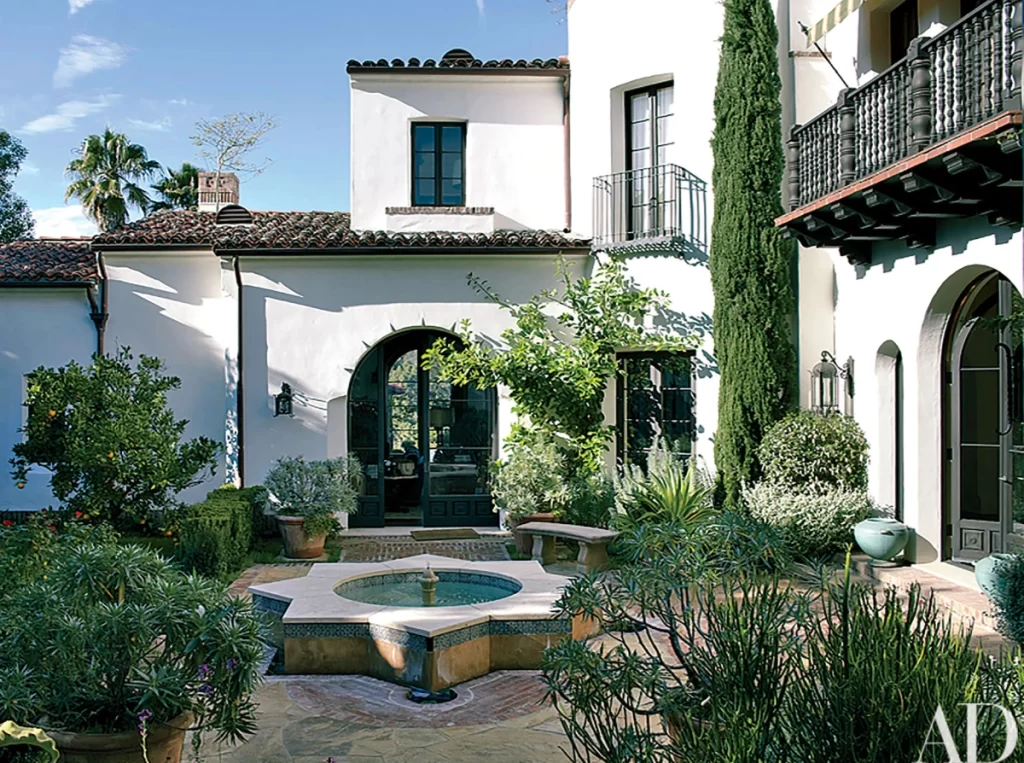
5. Wrought Iron and Ornamental Details
Mediterranean Revival style would be incomplete without wrought iron and ornamental details. These decorative elements are most often used in balconies, railings, gates, and light fixtures. Coupled with the warm notes of the stucco and the clay red tiled rood, the typically black or dark-coloured iron creates a visual balance.

6. Decorative Tile Work
Decorative tile work, not only on the roof but even on the floors or walls (and seldom on the stairs) is a common feature. These decorative tile work is mostly hand-painted and used in kitchens and bathrooms. If not handpainted, then the Spanish and Italian tiles are juxtaposed in a mosaic effort to add subtle accents to walls, floors, and backsplashes.
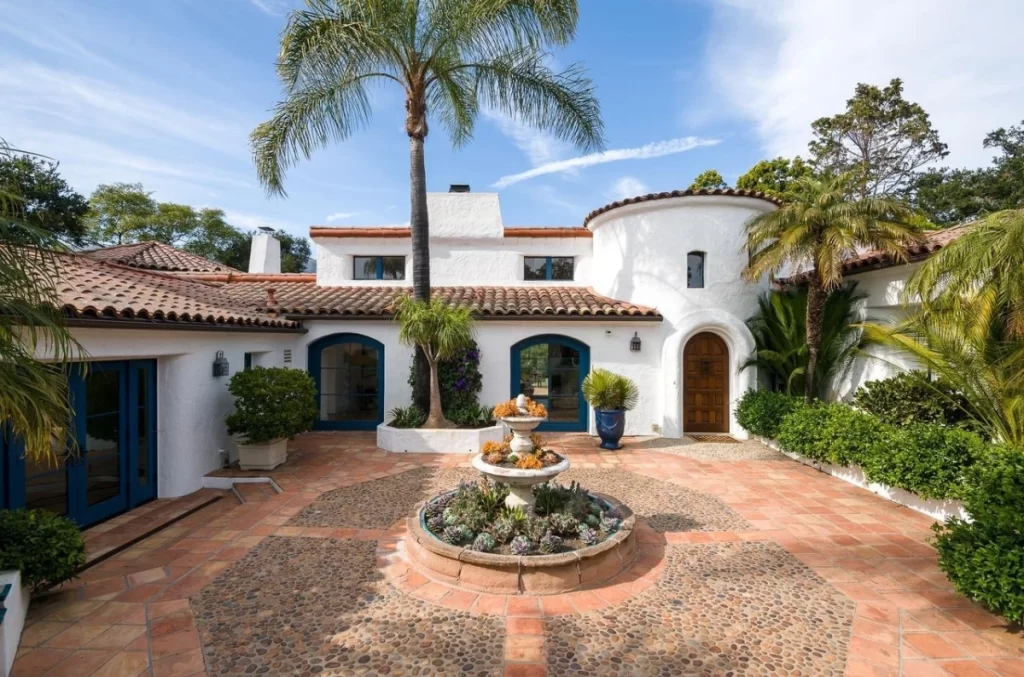
7. Heavy Wooden Doors
The Mediterranean Revival style architecture often incorporates heavy wooden doors and ceilings. These solid, carved doors and beams are typically made of rich, dark wood tones coupled with meticulous golden detailing. The heavy wooden doors often have iron hardware, enhancing their rustic appeal while ensuring durability and security.

8. Landscaped Gardens with Mediterranean Plants
No Mediterranean Revival home is complete without landscaped gardens with Mediterranean plants. Gardens typically feature drought-resistant plants such as olive trees, lavender, bougainvillaea, and citrus trees, all associated with the Mediterranean sensibilities. These gardens create a serene environment and enhance the overall connection between the interior and exterior living spaces.
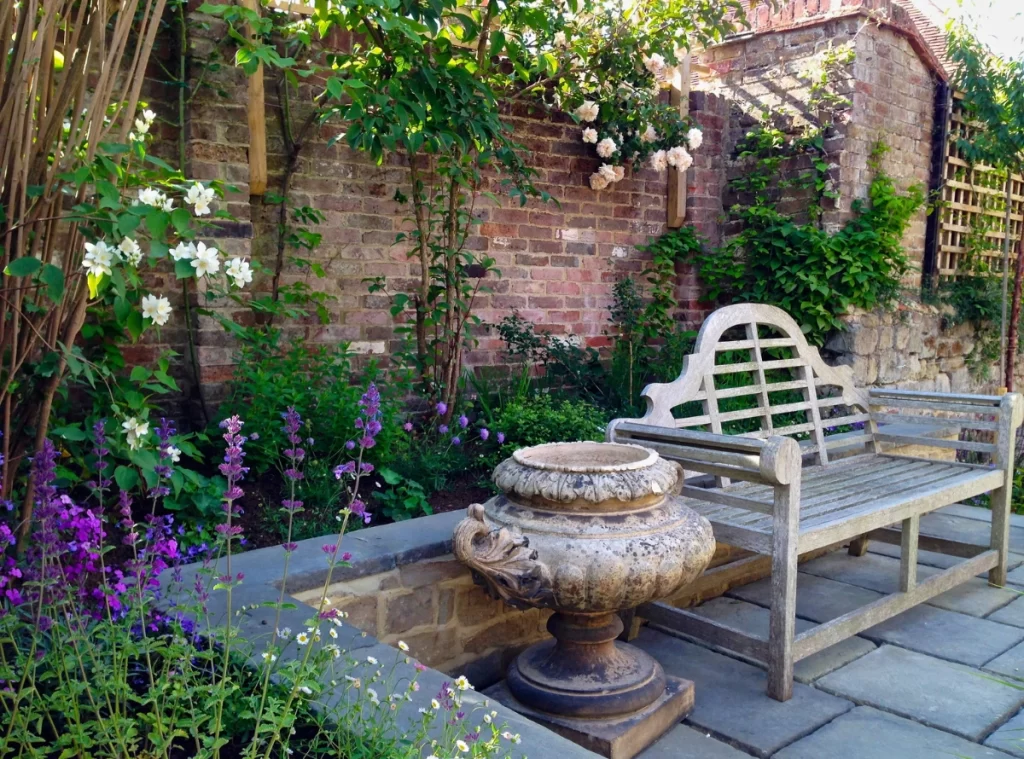
Image Courtesy – The Spruce
Contributor

